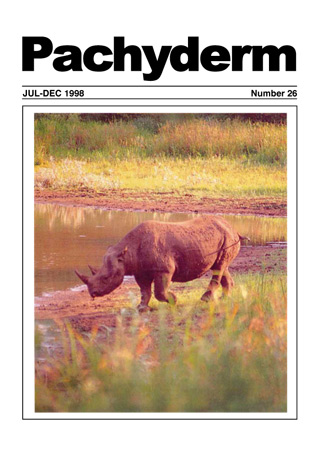Elephants, human ecology and environmental degradation in north-eastern Ghana and northern Togo
Abstract
Describes the conflict between people and elephants and the relationship to political upheavals in Togo, and notes the growth of human population, soil degradation, and changes in rainfall. A 1991 aerial survey estimated 130 elephants in the region between Fosse-aux-Lions NP and the Doung Forest area and although no censuses have been taken since the present estimate is 100-150. Elephant moved from Togo to Ghana during the 1990-92 political disturbances when local people in Togo took over protected areas. Interviewed villagers in Ghana in 1996 said crop raiding had increased over the last decade, and particularly the past 4-5 years. 37 of the 66 villages (42 in Ghana and 24 in Togo) visited reported damaged crops. The majority of people said elephants were simply destroyers of crops, but there is some belief in medicinal value of dung, and one group in the Pana area of Togo claimed to revere elephants as ancestors. Human population increase and resultant land use needs play a disturbing role in elephant range, this coupled with apparent changes in rainfall and loss of soil fertility do not auger well for conservation.
Downloads
Published
How to Cite
Issue
Section
License
Copyright (c) 1998 Moses Kofi Sam, Richard F. W. Barnes, Kotchikpa Okoumassou

This work is licensed under a Creative Commons Attribution-NonCommercial 4.0 International License.




